Solitude and isolation; aloneness and loneliness. These are issues that most writers must grapple with at some point in their careers, since writing is usually practiced in solitude. Even the writer who works in a busy cafe or a crowded household has to achieve a bubble of quiet within that space, to enable her to listen to the inner voice.
At first glance, these would appear to be non-issues for the introverted writer, who thrives in solitude. Yet introverts need human connection as well. We are not immune from loneliness; we are not invulnerable to solitude’s darker twin, isolation.
While solitude can be seen as the joyful state of being alone and liking it, isolation is another brand of aloneness. I can think of two kinds of isolation: the first, an aloneness imposed against our will, deprived of company by death or desertion, by the choices of others or by chance and circumstance. Most people recognize this form of isolation: we may have encountered it as “fear of abandonment” or “homesickness” or “mourning” or “the empty nest.” But there is also self-imposed isolation. At its most extreme, we might call this a social phobia. It’s the voice that whispers in our head that it’s just easier to be alone, that people are too unpredictable, relationships are too taxing. We are better off without others. We can go it alone. We don’t have to let anyone else in.
The difference between solitude and isolation is not a matter of quantity: people can be quite happy spending large amounts of time alone, or having a small circle of intimate friends. Rather, it’s a matter of quality. Solitude is an aloneness full of freedom, serenity, a sense of connecting with oneself. It may be joyful or peaceful, stimulating or relaxing. Even some unhappiness expressed in solitude may be healing: we may need time alone to work through our anger at another person, to mourn a loss, to have a good cry. This is still solitude, marked by feeling connected with the inner self.
Isolation, on the other hand, is marked by uneasiness. It may be characterized by numbness, a disconnection with oneself. Addictions often thrive in isolation: compulsive overeating, binge drinking. The aloneness is less a matter of choice than the product of an insidious whisper in the brain: Nobody wants to hear from me. I’m safer alone anyway.
In our society, with its emphasis on social relationships and extroversion, introverts are often assumed to be isolated. But most of the time, our solitude is just our battery-recharging time, the happy and fruitful aloneness we need. Our relationships are characterized more by depth than volume. When disconnection and loneliness arise—which can happen to anyone, introvert or extrovert—it’s important to reach out to those we trust, to break the grip of isolation.
All of us must find the balance that works for ourselves: time alone and time spent with others; time looking inward and time looking outward.
For more discussion of this issue, see Caroline Knapp’s essay, “Time Alone: Navigating the Line Between Solitude and Isolation,” in the collection The Merry Recluse: A Life in Essays, Counterpoint Press, 2004.
~ ~ ~ ~ ~ ~ ~ ~ ~ ~ ~ ~
Jennifer Hubbard is the author of THE SECRET YEAR and longtime Shrinking Violet. She also has impeccable timing. Thank you, Jenn!
Blog: Shrinking Violet Promotions (Login to Add to MyJacketFlap)
JacketFlap tags: coolest introverts in children's literature, Allen Zadoff, Add a tag
SVP: You’ve been called the Little Introvert That Could. What’s your secret?
I moisturize. Actually, that doesn’t help much. I think the key is accepting my limitations, even leaning into them a little. For example, I’m not great with social networking. When my first novel Food, Girls, and Other Things I Can’t Have was published, it was suggested I get on Twitter. I checked it out and saw that people who were good at it were tweeting a dozen or more times per day. They were funny and real, they were carrying on a conversation as part of a community. I could see what they were doing, but I couldn’t do it myself. So I was thinking, “I’m dead. I can’t tweet. I’m dead.” As if Twitter were oxygen, right? But then I thought, instead of trying to be a Twitter black belt, what if you just participated at any level? So I instituted Tweet Tuesdays. I’d send one tweet on Tuesday. That’s it. It sounds ridiculous, right? But instead of doing nothing, I was doing something. I was in the game. It’s a lot easier to go from one tweet to two than it is to go from zero to a hundred a week.
SVP: When did you first realize you were an introvert?
I was very shy in the womb. I hardly spoke to anyone. When I got out, the trend continued. As a kid, I was most comfortable in my room, watching TV, reading, listening to music. In my book My Life, the Theater, and Other Tragedies, the hero is a techie who hides up in the lighting grid and watches the world go by down below. People want to know where my inspiration comes from. I was that kid looking out his bedroom window at the neighbor kids playing, and I was afraid to join them. I can’t say why.
SVP: In what ways has being an author met or exceeded your expectations? What were some big surprises?
The young adult community is very welcoming to new writers. I was quickly embraced as part of a community of authors, readers, booksellers, librarians. People are passionate about their YA! That was a surprise. I was also very lucky in that my publisher and editor, Elizabeth Law at Egmont, was a fantastic tour guide. If you know her, you know she’s a delightful voice online and she has an amazing ear for story. What you don’t see is how she brought me into the fold, introduced me around, helped me find my way. She’s been a supporter, coach, and mentor, as well as a fantastic artistic collaborator.
 |
|
8 Comments on An Interview With The Little Introvert That Could (aka Allen Zadoff), last added: 5/26/2011
Display Comments
Add a Comment
Blog: Shrinking Violet Promotions (Login to Add to MyJacketFlap) JacketFlap tags: coolest introverts in children's literature, Ursula LeGuin, coolest introverts in children's literature, Ursula LeGuin, Add a tag
0 Comments on More Cool Introverts in Children's Literature as of 1/1/1900
Add a Comment
Blog: Corazonadas (Login to Add to MyJacketFlap) JacketFlap tags: children's art, Diego Rivera, Illinois, Cantinflas, Lakewood school, Hamphire High, Jorge Gonzales Camarena, Add a tag
  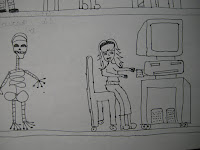   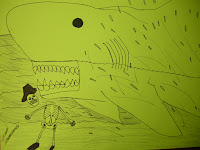 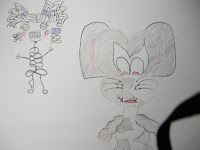 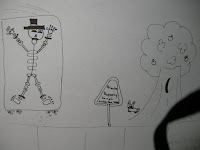    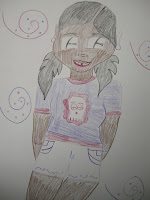 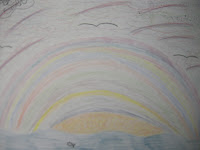  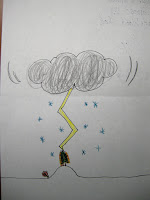 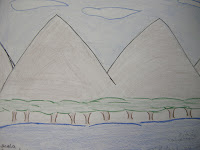 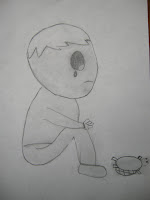 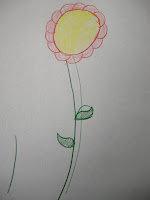 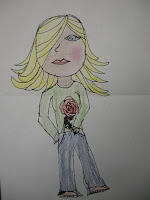  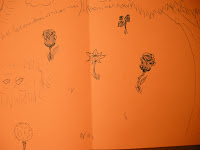  Some questions kids in Illinois wanted to ask but didn’t have a chance (these question I got from letters that Mr. Avila’s Class wrote, most of them were written in Spanish, so I am doing my best at translating): Kid’s Question: Where in Mexico do you come from? Yuyi’s Answer: From Xalapa, the Flowered City, in the hot state of Veracruz. K.Q.: How old were you when you came to the USA? Y.A.: 25 K.Q.: Did you have papers to cross the border or did you come as a mojada, a wetback? Y.A.: When I crossed the border, I did it with what is called a Fiancé Visa, which meant I was allowed to come into the USA to marry the man I loved, who was a USA citizen. So, I didn’t get here as a mojada, instead I carried my baby walking through a hot concrete bridged that linked Ciudad Juarez, Mexico, with El Paso, Texas, where the immigration office reviewed my visa and finally let me in. Being Mexican, a new mother, and 25, I wasn’t granted a regular tourist visa, which was all I really wanted. K.Q.: How long does it take to write a story? Y.A.: some book I write fast; my book Just A Minute took me less than a week. Other stories I am still writing and are taking me years! K.Q.: Where do you live? Y.A.: Near San Francisco, California, in a place named Pleasant Hill, and it really is a Monte Placentero! K.Q.: Did you create Señor Tlalocan? Y.A.: Señor Tlalocan is another name for the Aztec God Tlaloc, the maker of rain, lighting and thunder. Tlaloc lived in a lush paradise called the Tlalocan, a place where everything grew. My Señor Tlalocan is just a Yuyi-version of this deity. Click here to get a template that can be printed and cut to make a Señor Tlalocan that moves his arms and legs. For you! K.Q.: How old were you when you got interested in writing for children? Y.A.: I was 26, I had just gotten to the USA and fell in love with children’s books in the public library. I wanted to write and illustrate my own. I had a lot of learning to do. K.Q.: Are you married? Y.A.: I am married to Tim, a tall and skinny gringo whom I love with all my Spanish. K.Q.: Did you go to the University? Y.A.: I graduated from P.E school and from Psychology, both at the Universidad Veracruzana in my country. K.Q.: How many children do you have? Y.A.: One, he is a 13-year-old skyscraper. K.Q.: Are you impressed with what you have accomplished? ¿Esta admirada de usted misma? Y.A.: I am feliz with myself and what I do! It makes me happy to be able to create and share my work. When I was growing up, I never though of myself as an artist, but I wished I could be one. Now, I am impressed of how much can be accomplished if ones sets to work for it. K.Q.: What is your real name? Y.A.: You can hear me talk about my real name by going to this link and clicking on the red rectangle where it says “Listen Now” K.Q.: Can you give me a drawing of Cantinflas? Y.A.: Here is one. This is from the sketch I made for one of the illustration of Los Gatos Black on Halloween: 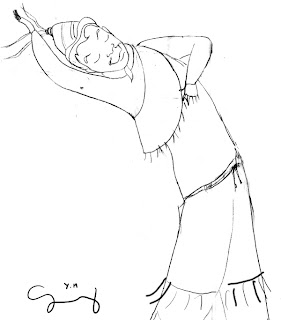 K.Q.: What county you like best USA or Mexico? Y.A.: Mexico is my Corazon, my heart; it makes palpitate the energy that runs inside me. The United States is the place where, with work and dedication, I am being able to follow my dreams. They are very different to me, and I love them both. Mr. Avila Question: Do you think that your art is influenced by the art of the Muralist Diego Rivera? Y.A.: I am sure my art is influenced by Diego Rivera’s art, because my work is the result of all the things that are part of my growing up, my memories, and the images I love, including those saw in my text books at school, in the movies my parents took me to see, and in magazines and books. Diego Rivera is one of my favorite artists, but I also admired another muralist whose work I saw in my text book at school. His name is Jorge Gonzales Camarena And, to finish, how I look like to some of the children in Illinois (this one is from Karla and additional art by Rocio): 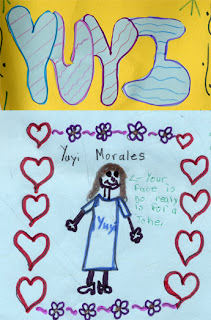 What a great day in Illinois! What a great day in Illinois!
0 Comments on First dust of snow in Illinois as of 1/1/1990
Add a Comment
Blog: Corazonadas (Login to Add to MyJacketFlap) JacketFlap tags: Diego Rivera, cat, skull, zombie, pumpkin, Halloween masks, cabeza olmeca, werewolf, Cantinflas, Add a tag
Nothing to wear for Halloween yet? No worries, your Halloween masks are here!
0 Comments on Halloween masks as of 1/1/1990
Add a Comment
Blog: Book Moot (Login to Add to MyJacketFlap) JacketFlap tags: art books, Diego Rivera, art of Mexico, Add a tag
0 Comments on Shades of Diego Rivera as of 8/30/2007 8:52:00 PM
Add a Comment
Blog: AmoxCalli (Login to Add to MyJacketFlap) JacketFlap tags: children, illustration, history, art, mexico, painting, Diego Rivera, Add a tag
0 Comments on Diego as of 3/16/2007 6:01:00 PM
Add a Comment
|









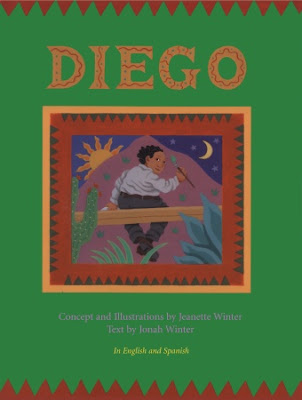
Oh my. A topic that is unfortunately very close to my heart. As an innie, I cherished my solitude. But then, the man of the house took a great job in a very small town and I learned first hand the difference between solitude and isolation.
As reluctant as I am to share too much personal information, I will say that I came pretty close to losing it, mentally. I began suffering from panic attacks, extreme worry, hypochondria (well, worse than what I already have) and I pretty much became scared of my own shadow. It was such a horrible place to be. It took me three years to find a job (this place is big on nepotism and I was (and still am) an outsider) and the volunteer work I did just wasn't doing the trick. I needed more.
I am happy to report that I've returned to my old normal self, mostly. I vowed that I would never, ever, ever allow myself to get into that situation again. The lessons I learned about myself were invaluable but I think I would rather've learned them another way.
That balance is always shifting for me. Some days and weeks, I get enough solitude and others not nearly enough.
When there is no solitude to be found anywhere, I go for a long walk with my Ipod. I always feel better.
Thanks for the insight. I think my longing to return to my solitude influences my attitude towards marketing.
This is something I struggle with. I love to be around people when I write, but I hate being interrupted. Right now I'm sitting on the sofa with my laptop in my lap and my daughter sitting next to me playing the Wii. This is how I usually write, whether it's a blog or a novel. Unfortunately, that means I have to come out of my writing bubble and answer the occasional question like "What's for dinner?" or "Did you just see that dunk?" The nerve of them, speaking to me while I'm clearly having a conversation with my muse.
I'm not an introvert--far from it. I'm as extro-a-vert as one can be, yet I need my solitude. I love it. In solitude, I can create.
L.E.: I'm glad you found your way out of the isolation!
Cynthia, T.S., and Terri-Lynne: It is so often a question of that elusive thing called balance!
Kay: I think it influences mine also. ;-)
L.E. - yet another reason to blog anonymously, no? Your story makes me very aware of how thin that line between isolation and solitude truly is, and how much of that is determined by whether or not we choose it.
Cynthia, I am becoming more and more convinced that there is just about nothing a good walk cannot cure.
LOL, Kay! I'm certain it does!
T.S., so interesting that you enjoy being around people when you're writing! I have had about zero luck with that. I am much too easily distracted by their conversations and dramas.
Terri-Lynne: Very cool to hear from an extrovert who also craves solitude! Good for us introverts to keep in mind.
And Jenn, thanks again so much for the terrific post!
I don't know why I'm always so surprised when someone knows exactly how I think. Most days,I enjoy my quiet, solitary life, but every once in a while, those "insidious whispers" kick in. Thanks for helping me realize that I'm not alone in that. It makes all the difference.